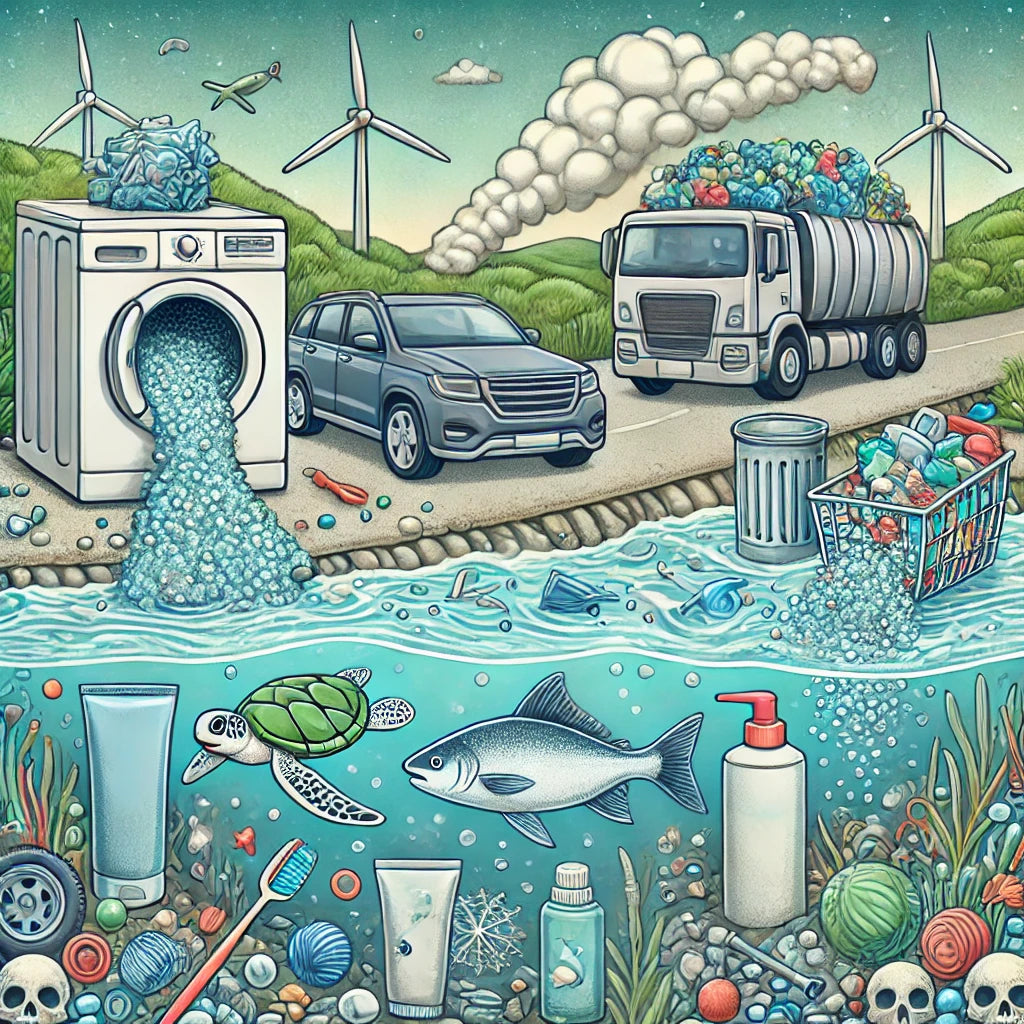Jan 6, 2025
Unseen Pollutants: How Everyday Items Contribute to Microplastic Pollution
Unseen Pollutants: How Everyday Items Contribute to Microplastic Pollution
Microplastics have become a significant environmental and health concern in recent years. These tiny plastic particles, measuring less than 5 millimeters in size, are pervasive in our ecosystems, infiltrating oceans, rivers, soils, and even the air we breathe. While much attention has been given to the problem, understanding the sources of microplastic pollution is essential for addressing it effectively. Among the primary culprits are everyday items we use, often unknowingly contributing to this growing crisis. Let’s explore how synthetic fabrics, personal care products, and other household items release microplastics into the environment.
Synthetic Fabrics: The Silent Shedders
One of the most significant sources of microplastic pollution is synthetic fabrics, such as polyester, nylon, acrylic, and spandex. These materials are widely used in clothing, upholstery, and other textiles due to their durability, affordability, and versatility. However, with every wash, synthetic fabrics shed tiny fibers, known as microfibers, that make their way into wastewater systems.
A single load of laundry can release hundreds of thousands of microfibers. These particles are so small that they often bypass filtration systems in wastewater treatment plants and end up in rivers, lakes, and oceans. Once in aquatic environments, they are consumed by marine organisms, entering the food chain and potentially affecting human health.
What You Can Do:
-
Choose natural fabrics like cotton, wool, or hemp when possible.
-
Use a microfiber-catching laundry bag or filter to reduce fiber shedding.
-
Wash clothes less frequently and at lower temperatures to minimize microfiber release.
Personal Care Products: Hidden Microplastics
Many personal care products, including exfoliating scrubs, toothpaste, and shampoos, contain microbeads—tiny plastic particles added for texture or cleaning purposes. Although some countries have banned microbeads, they remain a source of pollution in areas where regulations are lax.
These microplastics are designed to wash down the drain, but they often evade wastewater treatment systems. Once released into the environment, they can persist for decades, causing harm to aquatic life and potentially entering human food and water supplies.
What You Can Do:
-
Check product labels for ingredients like polyethylene (PE) and polypropylene (PP), which indicate the presence of microplastics.
-
Opt for natural exfoliants like sugar, salt, or ground coffee.
Tires: A Surprising Source
Every time a vehicle’s tires make contact with the road, they wear down slightly, releasing tiny particles of synthetic rubber into the air and onto road surfaces. Rainwater often washes these particles into storm drains, which lead directly to rivers and oceans. Tire wear is one of the largest sources of microplastic pollution, particularly in urban areas with high traffic volumes.
What You Can Do:
-
Use public transportation, carpool, or bike to reduce tire wear.
-
Maintain proper tire pressure to minimize wear and tear.
Household Dust and Paint
Microplastics are also present in household dust and paint. Synthetic fibers from carpets, curtains, and furniture can become airborne and settle as dust, while peeling paint releases plastic particles into the environment. Outdoor paints used on ships, buildings, and roads are particularly problematic, as they often flake off and enter waterways.
What You Can Do:
-
Regularly clean your home using a vacuum with a HEPA filter to trap microplastics.
-
Choose eco-friendly paints and maintain painted surfaces to prevent peeling.
Packaging and Single-Use Plastics
Finally, single-use plastics and packaging materials contribute significantly to microplastic pollution. When these items break down, they fragment into smaller particles, which can persist in the environment for centuries.
What You Can Do:
-
Reduce reliance on single-use plastics by choosing reusable alternatives.
-
Properly recycle plastic materials and support initiatives to improve recycling systems.
A Call to Action
Microplastic pollution is a complex issue that requires collective action from individuals, industries, and governments. By understanding the sources of microplastic contamination and making informed choices, we can all contribute to reducing this environmental threat. From the clothes we wear to the products we use, small changes can make a big difference in safeguarding our planet for future generations.


